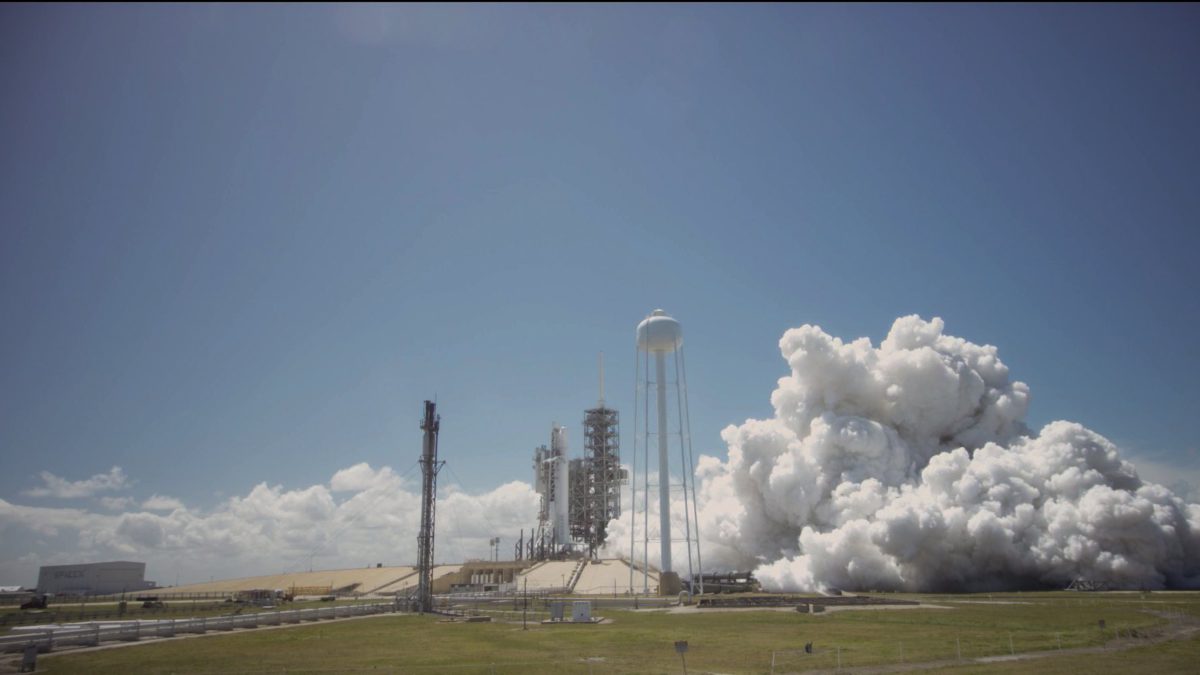Jason Davis • Mar 28, 2017
Your hypothetical questions, answered: SpaceX prepares to refly rocket booster
SpaceX is poised to make history this week by reflying a rocket booster that launched a payload into space last year before landing on a drone ship in the Atlantic Ocean.
It's the first attempt to demonstrate a capability the company has worked toward since its founding in 2002. If successful, the flight could mark a new milestone in the quest for what many consider to be the holy grail of affordable spaceflight: reusability.
The mission will blast a communications satellite to geostationary orbit, and the launch window currently opens Thursday, March 30 at 6:27 p.m. EDT (22:27 UTC).

How big of a deal is this?
It's a very big deal.
SpaceX's entire philosophy revolves around the concept of reusability. Company CEO Elon Musk has been dreaming about reusable rockets since the company's inception 15 years ago, when there was only a Falcon LV—which later became the Falcon 1 Musk proudly displayed on the Washington, D.C. National Mall in 2003. The company's website says reusability is "the key to making human life multi-planetary" because it could lower costs to the point where sending a million colonists to Mars is a feasible plan.
SpaceX first started playing around with reusable rockets at its McGregor, Texas testing facility, using a prototype called Grasshopper. After a series of landing attempts that ended in spectacular fireballs, the company successfully stuck a booster recovery at Cape Canaveral in December 2015. The feat has since been repeated on land and at sea, but SpaceX has yet to refly one of its returned rockets.
Until now.
Where does the flight fit in terms of firsts?
Describing the achievement in terms of firsts requires a few careful qualifiers. Here goes:
This is the first time a liquid-fueled rocket booster used for an orbital flight will be reused for a second orbital flight.
We have to specify "orbital" since Blue Origin has performed this feat during suborbital flights. We also have to say "liquid-fueled" because the space shuttle solid rocket boosters were reusable. Alternatively, we could scrap "liquid-fueled" and add something about the booster landing upright, rather than splashing into the ocean under parachutes like shuttle boosters.
That makes this sound like it's not a very big deal.
No, it still is! Perhaps a better way to describe the flight is:
SpaceX is about to take the concept of reusability farther than anyone ever has.
NASA was in the business of reusable rockets during the shuttle era, from 1981 through 2011. In addition to the solid rocket boosters, the shuttle itself was reusable, including its three main engines. But the program's original reusability ambitions were never realized. Vehicle refurbishment and turnaround times were far longer than predicted, and by the end of the program, the cost of a single launch hovered around $500 million.
Blue Origin has already flown and reflown its New Shepard rocket system multiple times, but those were suborbital test flights. SpaceX is doing this on an orbital flight, with a paying customer.
How much cost savings are we talking?
We don't know, since SpaceX and this particular customer, SES, are private companies.
The list price for a Falcon 9 flight to geostationary orbit is $62 million. Actual launch costs can be higher, depending on how much ground support you require; the NASA-NOAA Jason-3 flight to low-Earth orbit, for instance, cost $82 million.
SpaceX has hinted customers that don't need to throw their rockets away might eventually see 30 percent discounts. A light enough payload allows the company to add landing legs and grid fins, as well as hold back some fuel for the descent.
If you're willing to ride on a "flight-proven" rocket, as SpaceX calls it, President and COO Gwynne Shotwell said you might get another 10 percent off.
Where did this particular booster come from?
This is the recovered Falcon 9 booster from CRS-8, which launched a Dragon cargo ship to the International Space Station on April 8, 2016.
After launch, the booster made the first successful landing on the drone ship Of Course I Still Love You. Elon Musk originally wanted to refly the booster last June, but that was delayed, and a September pad explosion pushed things back even further.
In all this rocket talk, we forgot about the payload. What is it?
The payload is the SES-10 communications satellite. It's heading to geostationary orbit, and will hover above Earth at a longitude of 67 degrees West, where it will provide communications services to Latin America.
Brazil will also use the satellite for off-shore oil and gas exploration, SES said.
So is this actually going to work?
SpaceX sure thinks so—otherwise, the company probably wouldn't be risking their customer's multimillion-dollar communications satellite in the process.
After the CRS-8 booster was recovered in 2016, SpaceX test-fired it back on the launch pad at Cape Canaveral. Next, the booster was shipped back to Texas for more tests, and a final hold-down firing on the launch pad was conducted Monday.
If everything goes well, the booster will once again land on the Of Course I Still Love You drone ship. Assuming the rocket doesn't become a museum piece after that, maybe we'll see it fly again.
The Time is Now.
As a Planetary Defender, you’re part of our mission to decrease the risk of Earth being hit by an asteroid or comet.
Donate Today

 Explore Worlds
Explore Worlds Find Life
Find Life Defend Earth
Defend Earth



